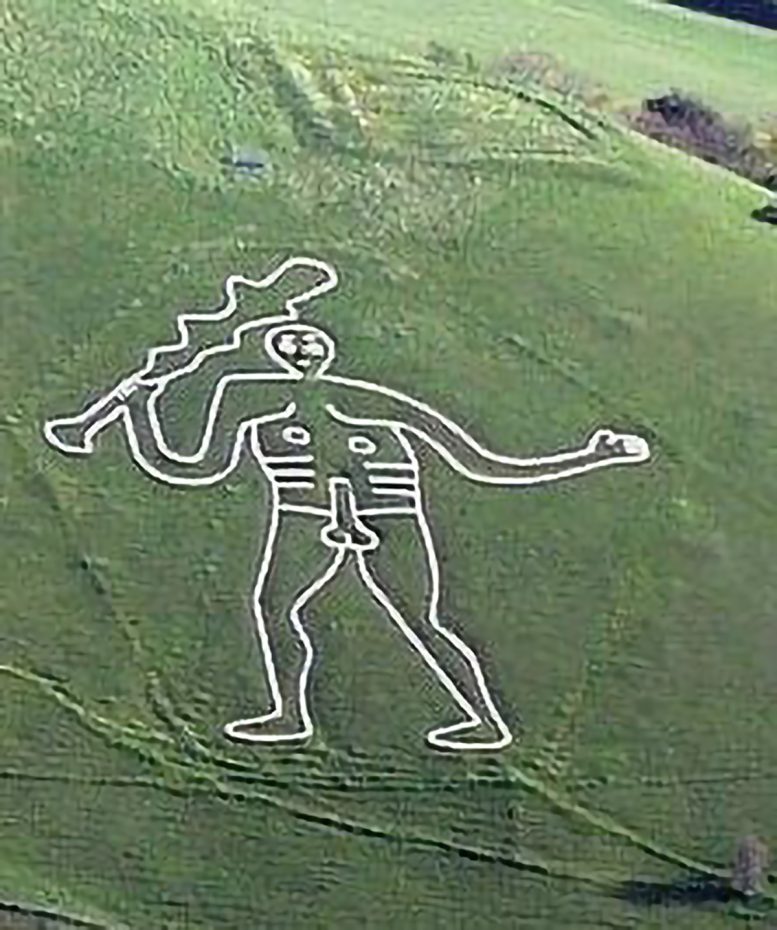
A new study has dated the Cerne Giant, a mysterious hillside figure in Dorset, to between 700 and 1100 A.D, revealing its potential ties to early medieval history and debunking previous myths about its origins. Credit: Pete Harlow – This file was derived from: The Cerne Abbas Giant – 011.jpg, CC BY-SA 3.0
For hundreds of years, the Cerne Giant—a monumental hillside engraving in Dorset of a naked man wielding a club and spanning 180 feet—has captivated both residents and tourists. The history of the giant, however, and in particular, its age, has long been a mystery. A new paper in Speculum: A Journal of Medieval Studies proposes that the Cerne Giant can in fact be dated to the early Middle Ages, and, as a result, its cultural context and significance more clearly understood.
The paper, written by authors Thomas Morcom and Helen Gittos, acknowledges that previous attempts to date the giant placed its creation either sometime in prehistory or in the early modern period. Using a technique called optically stimulated luminescence, researchers for the National Trust theorize that the hillside monument was actually constructed in the period between 700 and 1100 A.D, and potentially used as a mustering site for West Saxon armies.
Reevaluating Historical Theories
This dating breakthrough also sheds new light on various historical interpretations of the Cerne Giant’s identity. Many scholars had posited that the giant was modeled on the myth of Hercules, and although, as the authors write, “[a]t first glance, an early medieval date seems odd for a figure which looks like the classical god Hercules,” there was in fact a swell of interest in the Greek hero during the ninth century, lending credence to this hypothesis.
Another popular theory regarding the inspiration for the giant was its basis on Saint Eadwold. The authors propose that the residents of a Benedictine monastery, built in Cerne in the late tenth century, actively propagated this idea, redirecting interest in the giant away from Greek affiliations and towards Christian ones.
One final persona bestowed upon the giant was that of a pagan god called Helith. The authors of the Speculum paper write that this identification was a mistaken one, the result of a misreading, in the thirteenth century, of an account of the giant written in Latin.
The new findings concerning the Cerne Giant’s age and history make greater sense of this string of theories regarding its identity. Ultimately, as the authors write, this complicated biography is all “part of the history of the giant and what continues to attract so many people to him.”
Reference: “The Cerne Giant in Its Early Medieval Context” by Thomas Morcom and Helen Gittos, January 2024, Speculum: A Journal of Medieval Studies.
DOI: 10.1086/727992
>>> Read full article>>>
Copyright for syndicated content belongs to the linked Source : SciTechDaily – https://scitechdaily.com/challenging-historical-interpretations-scientists-shed-new-light-on-the-mysterious-cerne-giant/

















